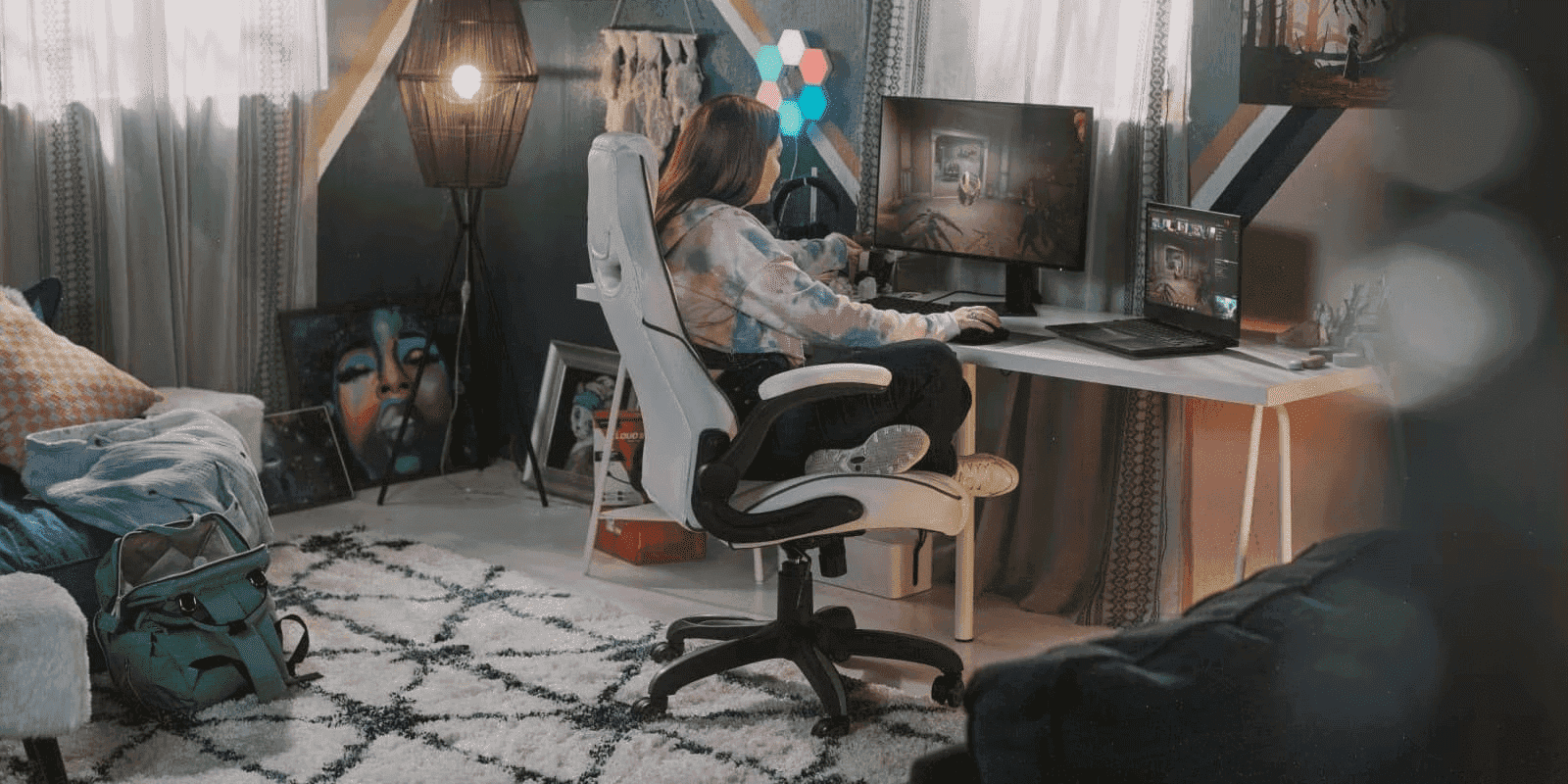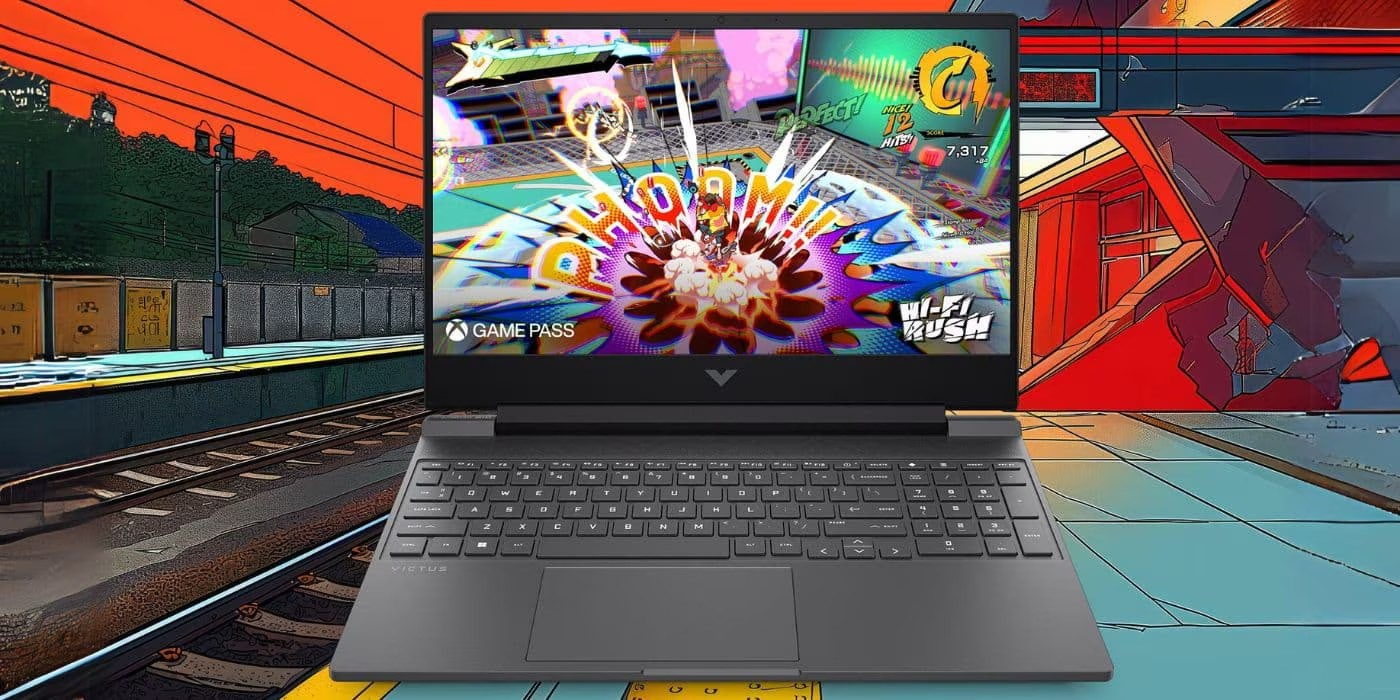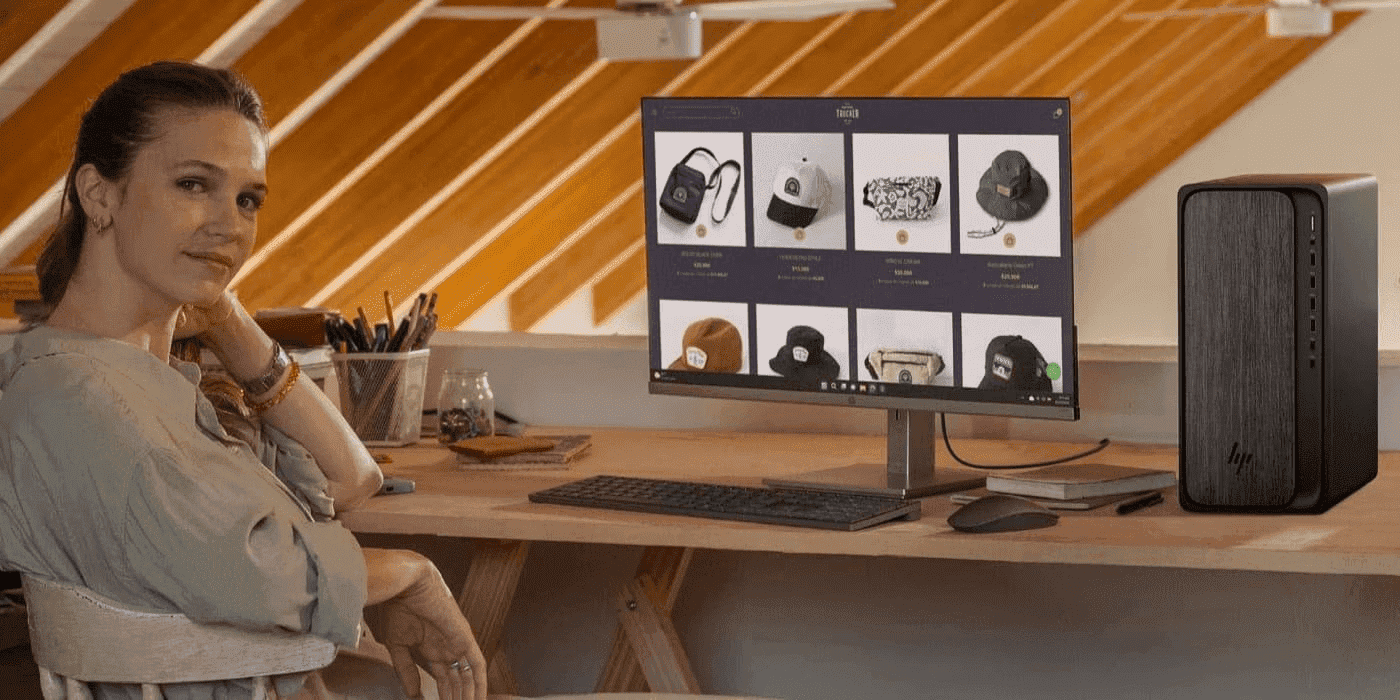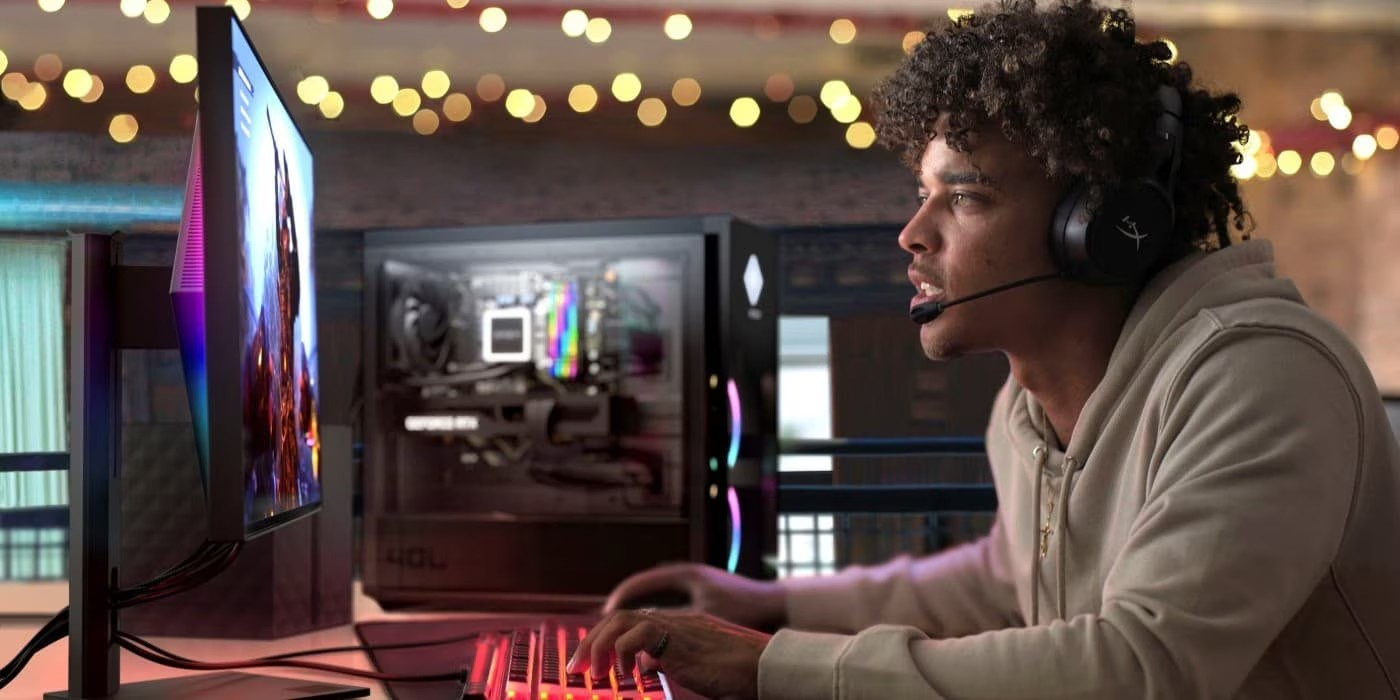Thank you for visiting the MALAYSIA HP Store
-
Contact Us
CONTACT USCall us
- Sales
- 1800 88 4889
- Technical support
- 1800 88 4889
Mon-Fri 8:30AM to 5:30PM
(exc. Public Holidays)
Chat with us- Sales
- 60166999350(WhatsApp)
-

Mon-Fri 8.30am - 5.30pm
(exc. Public Holidays)
Live product demo
Store finder Locate our stores - Location
- My Account
Building a Silent Gaming PC: The Ultimate Guide to Noise Reduction


The demand for silent gaming PCs has grown significantly among Malaysian gamers, particularly during the hot and humid weather conditions when PCs need to work harder to stay cool. The room you choose for your gaming setup in your home can significantly influence the level of noise you need to manage. It’s not just the immersive and relaxing experience that quiet computing offers, but it’s the hallmark of a healthy build. After all, high temperatures throttle the speed at which your components can work, and overworked fan noise is a sign of a struggling PC – or one that is degrading faster in Malaysia’s tropical climate.
- Professional Necessity
- Active Noise Control and Mitigation
- Understanding PC Noise
- Component Selection for Malaysian Gaming Setups
- Air vs. Liquid Cooling in Malaysia’s Climate
- Fan Implementation and Cooling Strategies for Malaysian Weather
- Cable Management for Better Airflow
- Adapting to Malaysia’s Computing Environment
- Advanced Acoustic Optimization
- Maintenance in Malaysia’s Climate
- Final Word
Professional Necessity
For content creators and streamers in Malaysia’s growing gaming community, noise reduction technology isn’t a luxury but a necessity. Depending on the microphone, background noise can be easily picked up, and the incessant hum of a fan can really impact the quality of the stream and, therefore, viewer retention. Plus, there is a correlation between the intensity of a gaming moment (e.g. many other players on-screen or huge in-game explosions) and how hard your components–and therefore fans–are working.
Having a quiet environment is also needed for office workers, where team meetings would otherwise be distracted by the noise of a fan. Quiet gaming PC designs can significantly enhance focus and productivity. For quiet gaming setups where the desktop sits on top of the desk, this is even more of an issue. Consider fanless solutions for a quieter environment, as they eliminate moving parts that often contribute to noise. In many cases, it’s not the user that experiences the noise, because they’re wearing headphones. Instead, it may unknowingly upset those on the other end of a call. Of course, a cheap way to tackle this is to just buy headphones with noise cancellation, so the noise is canceled out.
For professional settings, HP has integrated AI noise reduction, eliminating the need for manual audio editing. This technology can reduce or eliminate ambient noise in real time, ensuring crystal-clear audio during video calls with no distractions.
Generally, gaming laptops are thought to be the culprits of high noise, but this isn’t strictly true. For those who want a quiet gaming experience, opting for solutions with powerful components (so they needn’t work too hard) in conjunction with advanced cooling solutions proves invaluable.
Active Noise Control and Mitigation
Harnessing the Power of Active Noise Control
Active Noise Cancellation (ANC) is redefining audio experiences by producing sound waves that counteract unwanted noise. This innovation is invaluable for gamers seeking total immersion in their digital adventures. Enjoy gaming in silence with active noise cancellation and relish uninterrupted digital escapes. Utilizing adaptive algorithms, ANC systems employ microphones to capture ambient sounds, and through sophisticated signal processing, they generate sound waves that neutralize the incoming noise. This intricate method ensures quality sound cancellation for gaming PCs. Devices including noise canceling headphones and gaming PCs with ANC maximize the tranquility of gaming sessions by diminishing disruptive background noises.
Choosing Optimal Noise Mitigation Solutions
It’s crucial to integrate acoustic measures within the physical structure of your PC. Selecting effective noise reduction technologies requires a keen understanding of the computer’s acoustic challenges. Strategies for acoustic optimization are essential for optimal performance. Devices with ANC excel in unpredictable ambient noise settings, making noise cancelling headphones like the HyperX Cloud III Gaming Headset an excellent investment for gamers seeking superior sound isolation. For the best results, it’s advisable to choose products that blend passive and active noise reduction techniques, ensuring thorough sound control. HP’s Acoustic Optimization integration in products offers impeccable harmony between noise suppression and audio fidelity, crafting a gaming atmosphere that enhances enjoyment and immersion.
Understanding PC Noise
Common Sources of PC Noise
A standard PC typically generates between 30 to 50 decibels of noise, and at the upper range, it becomes painfully distracting. Recognizing the frequency and pattern of noise is crucial in tailoring noise cancellation solutions.
It isn’t always the components themselves that make the majority of the noise, but the fans which keep them cool. This is why the noise rises as the PC undergoes more demanding tasks – the components work harder, so the fan does too.
However, hard drives can create mechanical noise as well as vibration from their spinning platters. The graphics card typically has its own set of fans, and these are harder to customize than the external fans. Finally, coil whine from voltage converters can produce distinct high-pitched sounds.
Identifying Noise Patterns
Knowing that certain components may make a noise isn’t enough when building a silent gaming PC. It’s important to distinguish between them, so the culprit can be identified:
-
Whirring: Fans
-
Clicking: Hard drive or loose cable
-
Buzzing: Power supply or coil whine
-
High-pitch whine: GPU or power supply components
Measuring and Benchmarking Noise
To further help identify a noise issue, it’s important to test when the noise occurs or changes behavior under specific loads or temperatures. To accurately measure this, make sure noise measurements are taken from a consistent distance:
-
CPU stress test vs GPU stress test to identify different fans
-
GPU coil whine may rise during gaming scenes with high FPS
-
Perform a large file transfer to hear hard drive activity
-
Power supply noises altering during system startup
-
Extended load test can identify external fan or thermal issues
-
Physically inspect the machine for loose cables or faults
Component Selection for Malaysian Gaming Setups
To remedy any noise problems, it’s first worth learning how to optimize your PC for gaming, as any boosts in efficiency will drop the temperature, and therefore might reduce noise (depending on the source).
As explained below, the chassis size, design, and cable management are crucial to keeping noise down. It is for that reason that it’s recommended to use the HP Gaming HP-Desktop as a springboard, where implementation and materials will create a foundation to succeed in keeping the noise down.
It’s worth understanding that as a general rule of thumb that, the more powerful the components are, the less noise they make, as they don’t need to work as hard to accomplish tasks.
CPU and GPU Selection
The key is that modern processors (CPU) offer high performance-per-watt ratios which generate less heat and require less cooling. When selecting a CPU, focus on models with lower TDP ratings that maintain high performance. For graphics cards (GPU), look for models featuring zero-RPM modes, where fans remain completely still during light loads, and premium heatsink designs that have efficient heat dissipation, which is passive, rather than needing active fans. This passive-structure choice enhances acoustic control.
Power Supply Considerations
A high-efficiency power supply (PSU) rated 80 PLUS Gold or better will reduce heat output. These units typically operate in passive mode during low loads, eliminating fan noise entirely. But, to ensure the PSU is comfortable doing so, choose a capacity that exceeds the computer’s requirements by 20 to 30%.
Case and Motherboard Selection
When choosing a case, larger designs generally offer better airflow since components are less cramped. This is a low-cost way to improve airflow and will create a strong foundation for effective cooling. To further optimize both airflow and acoustic optimization, consider cases with the following features:
Noise Minimization Features:
Sound-Dampening Materials: Modern cases often include multi-layer acoustic panels, like dense foam with mass-loaded vinyl. These reduce noise, and can be found in:
-
Side panels with acoustic foam lining
-
Front panels with noise-absorbing material
-
Anti-vibration pads under the PSU
-
Silicone spacers for drive installation
Steel or Aluminum Construction: These materials are better at heat dissipation than glass or plastic. Rubber Grommets: Help isolate components to reduce vibration noise.
Airflow Optimization:
-
The structure placement of ventilation is key to maximizing airflow
-
Dedicated cable management channels to prevent obstructed airflow
Motherboard Characteristics
Advanced motherboards now include sophisticated fan control systems that can:
-
Create custom fan curves based on various temperature sensors
-
Implement hysteresis to prevent fan speed fluctuations
Air vs. Liquid Cooling in Malaysia’s Climate
Liquid cooling has become associated with premium PC builds due to its impressive ability to use water as a means to dissipate heat. But, fans are far from redundant, especially in Malaysia’s tropical climate where ambient temperatures are higher year-round.
Air Cooling Benefits
-
Lower maintenance requirements
-
Cheaper and easier installation
-
No pump noise
-
Zero risk of leakage
-
Better suited for Malaysia’s humid conditions where moisture may be a concern
Liquid Cooling Advantages
-
Superior thermal capacity
-
Smaller physical footprint
-
More efficient heat transfer
-
Sometimes quieter than a fan
-
Can provide better cooling in Malaysia’s high ambient temperatures
In reality, premium PCs like the HP Elite Tower 800 G9 Desktop PC use both advanced cooling solutions and multiple fans in tandem. Together, neither the cooling pump nor the fans need to be overworked, meaning they help keep each other quiet. This is a good strategy to opt for when building a quiet PC, and it can also diversify points of failure (if the liquid cooling has an issue, there are still ample fans to reduce temperatures).
Fan Implementation and Cooling Strategies for Malaysian Weather
The key to reducing the noise of a gaming PC while effectively reducing temperatures lies in fan implementation and structure optimization, particularly important in Malaysia’s hot and humid climate.
The key to reducing the noise of a PC while effectively reducing temperatures lies in fan implementation. Larger fans operating at lower RPMs can move the same volume of air as smaller fans at higher speeds, but the latter is noisier. Premium fans featuring specialized blade designs and magnetic levitation bearings can also reduce noise.
Use 140mm or 180mm fans where possible, implementing fan curves that favor gradual speed changes. Explore equal pressure strategies with more intake fans than exhaust fans (positive pressure) and install rubber mounting points to minimize vibration.
Key considerations:
-
Use 140mm or 180mm fans where possible
-
Implement fan curves that favor gradual speed changes
-
More intake fans than exhaust fans (positive pressure)
-
Install rubber mounting points to minimize vibration
-
Consider ambient room temperature in Malaysia when planning cooling
Cooling a laptop is more difficult, and the most effective method is to use a cooling pad, which can vary in noise levels depending on the model. Laptops are naturally noisier, and they have their own set of considerations. A cheap and passive technique is to prop up the laptop on a stand to increase airflow, thus reducing fan speed. Likewise, a PC shouldn’t sit on carpet or too close to a wall.
Cable Management for Better Airflow
Cable management can have a surprising impact too. Obstructing the airflow paths can create a lot of drag and slow down the cooling. When buying a PC from HP Malaysia, cable management is already taken care of. However, when building a PC entirely yourself, it’s important to use a case that has routing holes and tie-down points, make good use of straps and velcro, and finally pre-plan all the connections before installing.
Adapting to Malaysia’s Computing Environment
In Malaysia’s tropical climate, ambient temperatures are generally higher than in temperate regions, which presents unique challenges for PC cooling and noise management. Here are some specific considerations for Malaysian users:
-
Position your PC in an air-conditioned room when possible to reduce the baseline temperature
-
Consider humidity levels which can affect component longevity and cooling efficiency
-
Install additional intake fans if your PC is in a naturally ventilated space
-
Clean your PC more frequently, as dust accumulation is often accelerated in tropical environments
-
Monitor internal temperatures more vigilantly during the hottest months
These adaptations can help Malaysian gamers maintain optimal performance while minimizing noise levels in their specific environmental conditions.
Advanced Acoustic Optimization
Innovative acoustic optimization methods are reshaping the quiet gaming PC landscape, elevating user immersion. These advancements explore the intersection of design and technology for effective sound management. Technologies like ANC and custom algorithms help curtail undesired sounds, enhancing signal clarity. Fanless designs are a testament to achieving silent PC environments, enabling gamers to indulge in immersive gameplay without the interference of ambient noise. Additionally, noise suppression and filtering technologies further refine the auditory experience, paving the way for distraction-free gaming.
Significance of Sound Optimization in Gaming Settings
Sound optimization is integral to crafting meaningful auditory experiences in gaming environments. Effective noise control and optimization tactics are key in restraining unwanted noises. The incorporation of ANC and advanced hardware enables gaming PCs to operate more silently, for the benefit of both casual and dedicated gamers. This optimization not only bolsters sound quality but also augments system efficiency by allowing components to operate at quieter levels. These engineering breakthroughs underscore the vital role of adaptive noise control in gaming setups, making the quest for a silent gaming PC a feasible and fulfilling journey for gamers.
Products like the HyperX Cloud III Gaming Headset incorporate advanced acoustic technologies to deliver an immersive gaming experience while helping to block out external noise.
Maintenance in Malaysia’s Climate
One surprising cause of noise is a buildup of dirt and dust within the PC. Because of the inflow fans, dust can be sucked in and over time it settles on the components and within the fans’ bearings. In Malaysia’s tropical environment, dust accumulation can be accelerated due to higher humidity levels and often more open living spaces.
Regular cleaning is essential to ensure the fans spin as if they’re brand new, and components aren’t covered in an insulating layer of dust. Ensure the PC is powered down and you’re wearing an anti-static wristband. From there, use a microfiber cloth to gently wipe away the dirt, and use compressed air in a careful way to get between the vents.
For Malaysian users, consider implementing these additional maintenance practices:
-
Clean your PC every 2-3 months instead of the typical 6-month recommendation
-
Use dust filters on all intake fans and clean them monthly
-
Keep your PC elevated off the floor to reduce dust intake
-
Consider using a dehumidifier in the room where your PC is located
-
Check for signs of corrosion on metal components, which can be more common in humid environments
Final Word
The key to building a silent gaming PC in Malaysia is to ensure that the components have sufficient headroom between what they’re capable of and what you’re asking them to do. Opting for modern fan designs that focus on quietness is also important, but when noise is a priority, use as much passive cooling as possible. The larger the chassis, the easier it will be to optimize cable management and airflow.
For Malaysian gamers dealing with higher ambient temperatures, investing in quality components with efficient cooling designs will pay dividends in both performance and noise reduction. Whether you choose to build your own silent PC or opt for a pre-built solution like the HP Elite Tower 800 G9 Desktop PC, understanding these noise reduction principles will help you create a more immersive and enjoyable gaming experience.
- Sales
- 1800 88 4889
- Technical support
- 1800 88 4889
Mon-Fri 8:30AM to 5:30PM
(exc. Public Holidays)
- Sales
- 60166999350(WhatsApp)
-

Mon-Fri 8.30am - 5.30pm
(exc. Public Holidays)
Live product demo







